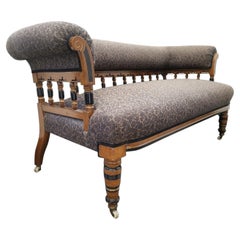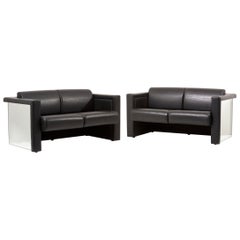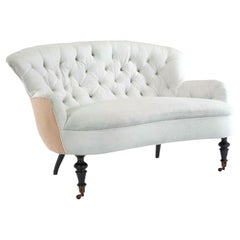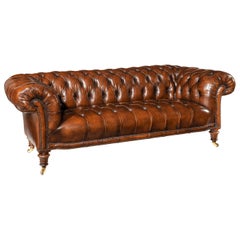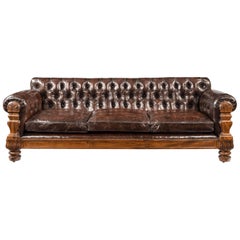Gillows of Lancaster & London Sofas
It would be difficult to find an antique furniture enthusiast or collector unfamiliar with the name Gillows of Lancaster and London. The British furniture company — which has earned references in the writings of Jane Austen and elsewhere in literature — is renowned for its exceptional quality craftsmanship, and attracted designers such as Thomas Chippendale, Thomas Sheraton and George Hepplewhite in its heyday.
The firm was founded circa 1730 by Robert Gillow (1704–72), who worked as a joiner, housebuilder and overseas merchant before making furniture for homes and export. Gillow established his business in his home city of Lancaster. However, the company later expanded into London in the 1750s after Robert entered into a partnership with his son, Richard, who apprenticed with a London architect and learned the merchant trade in Barbados. Richard had entrepreneurial aptitude — he managed apprenticeships at the firm, ensured that quality materials were a priority, navigated economic hardships, and designed furniture, too. He created seating based on sketches drawn by his cousin, James Gillow, in London.
London’s wealthy upper class took notice of the Gillows’ high-quality furniture, which came to include bedroom furniture, cabinets, a range of seating and other pieces made of rosewood or rich mahogany imported from the West Indies and Jamaica. By the end of the 18th century, the manufacturer was one of the leading furniture makers in Britain. Gillows designed its own furnishings and worked with significant designers; they had in-house upholsterers and cabinetmakers and employed decorative techniques such as “japanning” in their designs.
Gillows of Lancaster and London became Gillow & Co. in 1813 after selling to Redmayne, Whiteside and Ferguson. The company continued to thrive throughout the Georgian era and into the Victorian period, a time that yielded well-known collaborations with Scottish architect and designer Bruce Talbert on a regular basis. High-brow clients of the manufacturer clamored for their inventive and functional designs for tables and writing desks, many of which incorporated whimsical elements such as secret and pop-up drawers. There was also demand for earlier Gillow designs such as Baroque and Gothic Revival pieces as well as adaptations of Chippendale works.
Despite their success, Gillow & Co. entered into financial hardship during the late 1800s with the advent of mass-produced furniture. By 1903, they merged with Waring of Liverpool to become Waring and Gillows and, in 1980, were taken over by Maple & Co. to become Maple, Waring and Gillow. Today, many Gillows of Lancaster and London pieces are in museums throughout the United Kingdom, New Zealand and Australia.
Find antique Gillows of Lancaster and London furniture on 1stDibs.
1880s English Aesthetic Movement Antique Gillows of Lancaster & London Sofas
Gold
1970s German Mid-Century Modern Vintage Gillows of Lancaster & London Sofas
Mirror, Leather
1860s French Napoleon III Antique Gillows of Lancaster & London Sofas
Brass, Iron, Steel
1890s English Aesthetic Movement Antique Gillows of Lancaster & London Sofas
Beech
19th Century Maghreb Moorish Antique Gillows of Lancaster & London Sofas
Walnut
19th Century Egyptian Moorish Antique Gillows of Lancaster & London Sofas
Walnut
Mid-19th Century French Empire Antique Gillows of Lancaster & London Sofas
Bronze
1970s Dutch Mid-Century Modern Vintage Gillows of Lancaster & London Sofas
Chrome, Metal
18th Century Italian Neoclassical Antique Gillows of Lancaster & London Sofas
Giltwood
1980s American Vintage Gillows of Lancaster & London Sofas
Lacquer, Rattan, Upholstery
Mid-20th Century Unknown Mid-Century Modern Gillows of Lancaster & London Sofas
Upholstery, Beech
1960s Italian Mid-Century Modern Vintage Gillows of Lancaster & London Sofas
Fabric, Walnut
2010s Portuguese Mid-Century Modern Gillows of Lancaster & London Sofas
Upholstery, Wood
19th Century English Victorian Antique Gillows of Lancaster & London Sofas
Leather, Walnut
